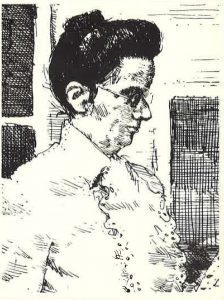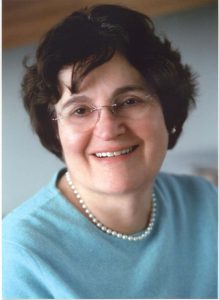Ovarian Cancer Research Symposium Set for Seattle
Next week, the Rivkin Center for Ovarian Cancer and the American Association for Cancer Research (AACR) will present the 11th Biennial Ovarian Cancer Research Symposium at the University of Washington in Seattle.
In an era of tremendous progress against many types of cancer, ovarian cancer remains difficult to diagnose and treat. This year in the United States, about 22,280 women are estimated to receive a new diagnosis of ovarian cancer and about 14,240 women are expected to die from this disease. Survival rates are significantly higher when the disease is diagnosed at an early stage, but because there are no good diagnostic tests for ovarian cancer, most patients are diagnosed at an advanced stage, when treatment becomes challenging.
The symposium in Seattle will bring together clinicians and researchers from across many disciplines and institutions worldwide in order to encourage collaborations toward advancing the field of ovarian cancer research. It’s a continuation of the AACR’s mission to prevent and cure cancer through research, education, communication, and collaboration.
In May, AACR Chief Executive Officer Margaret Foti, PhD, MD (hc), received the Ovarcome Excellence 2016 Award from Houston-based Ovarcome Inc., a foundation that provides research grants to scientists and financial support to those facing ovarian cancer. The award recognized Foti’s accomplishments in the field of cancer research and her commitment to increasing public awareness about cancer and improving the lives of ovarian cancer survivors.
As we look forward to learning about the important research advances discussed at the symposium, we’d like to share excerpts of Foti’s speech at the Ovarcome gala, in which she told the stories of three female pioneers in ovarian cancer research.
From the farm to the lab
Abbie Lathrop was born in 1868 to schoolteachers. She became a teacher herself, but after moving to a Massachusetts farm in 1900, she started a poultry business. That failed, and she started breeding rats and mice for hobbyists and pet owners. At one point, her farm was populated by 11,000 mice. She started selling them to researchers, including those at Harvard University, the University of Pennsylvania, and other major research institutions.
After Lathrop noticed that unusual skin lesions were developing in some of her mice, she began sending out samples to scientists, and ultimately struck up a correspondence with Leo Loeb, who was an experimental pathologist and one of the original founders of the AACR in 1907. He determined that the lesions in these mice were malignant.
Over the next few years, Lathrop and Loeb started doing experiments at her farm, and between 1913 and 1919, they published 10 journal articles. Together, they established that removing the ovaries reduced the incidence of mammary tumors and that tumor susceptibility varied in different strains of mice.
Lathrop’s legacy endures; several of the primary strains of laboratory mice being used in research today are descended from a single female mouse bred by Lathrop.
Unlocking the power of Taxol
Susan Band Horwitz is a professor of pharmacology at Albert Einstein College of Medicine in New York, engaged in the study of how drugs work inside the body. In 1977, Horwitz got a letter from the National Cancer Institute asking her to evaluate Taxol—a chemical that was obscure at the time. It came from the bark of the Pacific yew tree, and presented some interesting challenges in the lab.
Taxol didn’t look like other drugs, so Horwitz figured that it might not work like other drugs either. In her lab, scientists discovered that Taxol killed cancer cells by paralyzing structures called the microtubules that help cells divide.
Researchers established that Taxol could treat advanced ovarian cancer that wasn’t responding to other drugs. Taxol, now also known as paclitaxel, is still a cornerstone of treatment for ovarian cancer, as well as breast, lung, and bladder cancers. What’s more, the success stories that emerged from Taxol’s debut spurred a new era of drug development.
Horwitz went on to serve as President of the AACR in 2003, and she won our Lifetime Achievement in Cancer Research Award in 2011.
A critical gene discovery

Mary-Claire King, PhD, who proved that mutations in the BRCA gene increased women’s susceptibility to breast and ovarian cancer.
In the 1960s, Mary-Claire King was a graduate student in statistics when she decided to take a genetics class, just for fun. She loved the way that genetics felt like a puzzle, and she shifted her focus.
In the 1970s, King began looking into the genetic explanations for breast cancer. At that time, there were some apparent family connections, and some established risk factors, but no obvious genetic component. In 1990, King proved the existence of the first gene for hereditary breast cancer, which she named BRCA1. Soon after, scientists found another mutation, now known as BRCA2.
The breast cancer link came first, but it soon became clear that BRCA mutations are also responsible for an increased risk of ovarian cancer.
About 1.3 percent of women in the general population will develop ovarian cancer at some point during their lifetimes. But the risk is dramatically higher for women with the BRCA mutation. According to recent estimates, on average, 39 percent of women who inherit a harmful BRCA1 mutation, and 11 percent of women who inherit a harmful BRCA2 mutation, will develop ovarian cancer by age 70.
Women who have the mutation deserve that knowledge, and they wouldn’t have it without the work of Mary-Claire King.





